Some of the unique moist biomes of the world are temperate rainforests. These types of forests are rare since there isn’t heavy rainfall in temperate climates.
Only a few temperate rainforests are still found around the world. The biodiversity within them is complex, on the other hand.
From bugs to cougars, they are home to thousands of species.
Table of Contents
What Are Temperate Rainforests?
As their name suggests, temperate rainforests are types of humid forests of a coniferous or broadleaf nature in temperate climates.
These are very dense humid forests that sustain wildlife and are often located either next to water or mountains, specific to temperate climates of the world and all continents without Antarctica.
Temperate rainforests are also small forests as most temperate climates don’t get as much rainfall as other tropical areas.
Temperate Rainforest Locations
Heavy rain is limited in temperate climates. Still, some forests, mostly in protected areas, make up the short list of temperate rainforests of the world.
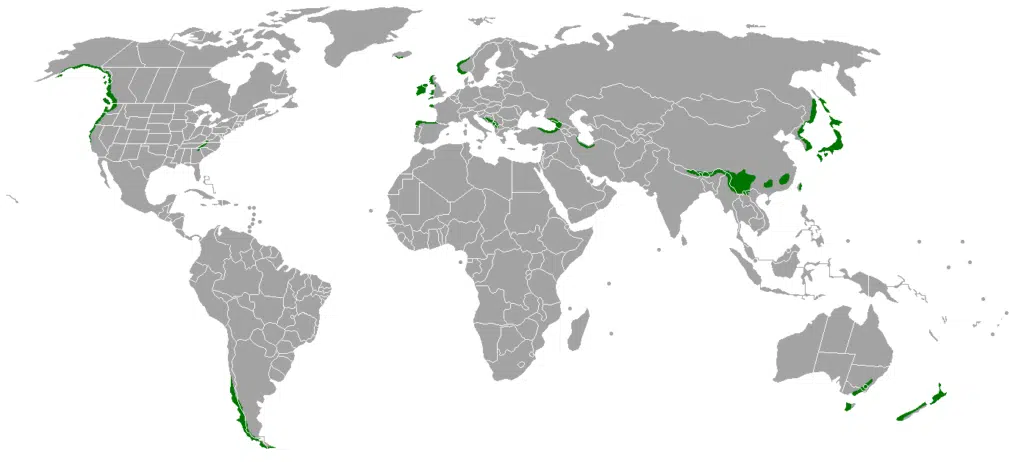
- North America’s Pacific temperate forests – the largest temperate forest in the world
- Eastern US’s Appalachian Temperate Rainforest – warm forest with up to 60 inches of rainfall per year
- South America’s Valdivian and Magellanic temperate rainforests – moist forests along the Chilean and Argentinian Coast
- South Africa’s Knysna-Amatole coastal rainforest – 2 separate forests with up to 60 inches of rainfall per year in South Africa
- Britain and Ireland’s Atlantic Oakwood forest – few remaining forests with more than 70 inches of rainfall per year
- Bulgaria, Turkey, and Georgia’s Colchian rainforests – mixed forests around The Black Sea
- Spain’s Fragas do Eume – broadleaf forests close to The Atlantic
- Serbia’s Vinatovača rainforest – high elevation protected forest.
- Iran and Azerbaijan’s Caspian Hyrcanian forest – rare forest in The Middle East
- Taiwan’s mountain forests – high-elevation forests
- Korea’s South Sea forests – mixes forests of The Korean Peninsula.
- Japan’s Taiheiyo evergreen forests – cedar and coniferous forests at high elevation
- India, Bhutan, and Nepal’s Eastern Himalayan broadleaf forests – mid-elevation forest
- Siberia’s Rainforest – South-Central Siberia forest
- Australia’s Eastern temperate rainforests – large forests with local trees
- New Zealand’s temperate rainforest – coniferous and evergreen forest
Animals In The Temperate Rainforest
The rainforests listed above are home to a wide range of animals, some endemic to these areas.
1. Raccoon

A species of North America, Europe, Japan, and Caucasia, Racoons (Procyon lotor) are some of the common and originally temperate rainforest-only species.
Raccoons grow from 8 to 15 inches and are identified by their furry appearance, black areas around the eyes, and black bands on the tail.
Their diet is vast and they are considered some of the most omnivorous animals in the world, eating plants, vertebrates, and invertebrates.
Raccoons can also be diurnal or nocturnal, adapting to the activity of their prey or the food available in their area.
With sufficient food, raccoons can live up to 20 years.
2. Opossums

Temperate rainforests in Eastern North America, swamps, and other types of forests are homes to Opossums (family Didelphidae).
The Virginia Opposum is the opossum of North America. Similar to cats in size, this is a marsupial with a white head and black ears.
It shows opportunistic feeding habits with the capacity to alter its feeding time depending on what it can find.
Still mostly nocturnal, this type of marsupial also lives in populated areas.
Opossums make their way into gardens, near compost and the insects crawl in there or gardens with vegetables.
These marsupials are also known to eat carrion and may be spotted next to road kills.
3. Coyote

Coyotes (Canis latrans) are found in Western North American forests, with an expanding habitat in Central America.
Deforestation or the clearing of land for agricultural use has also benefited the species as it displaced wolves.
There aren’t too many animals wolves are keen on having in their area.
A similar relationship exists between coyotes and foxes. While coyotes might feed on their kits, foxes make sure to stay out of their habitats.
Found in all types of forests including temperate rainforests and coniferous forests, coyotes are found in a wide habitat up to Alaska.
They are also some of the most responsible species for the lesser numbers of bobcats, another species of temperate rainforests.
4. Ensatina

Ensatinas (Ensatina eschscholtzii) are some of the common patterned lizards of the forest.
This lizard lives under vegetation on the ground, under rocks, and fallen trees. They feature a black base nuance with or without orange-brown patterns.
Ensatinas aren’t venomous but they do release a type of white substance from their skin to keep predators away.
Adapted to humid living, these types of lizards may even die when handled as they cannot deal with heat.
Coastal regions and mountains next to coastal regions of Western North America tend to be the areas where Ensatina populations are the highest.
5. Red Fox
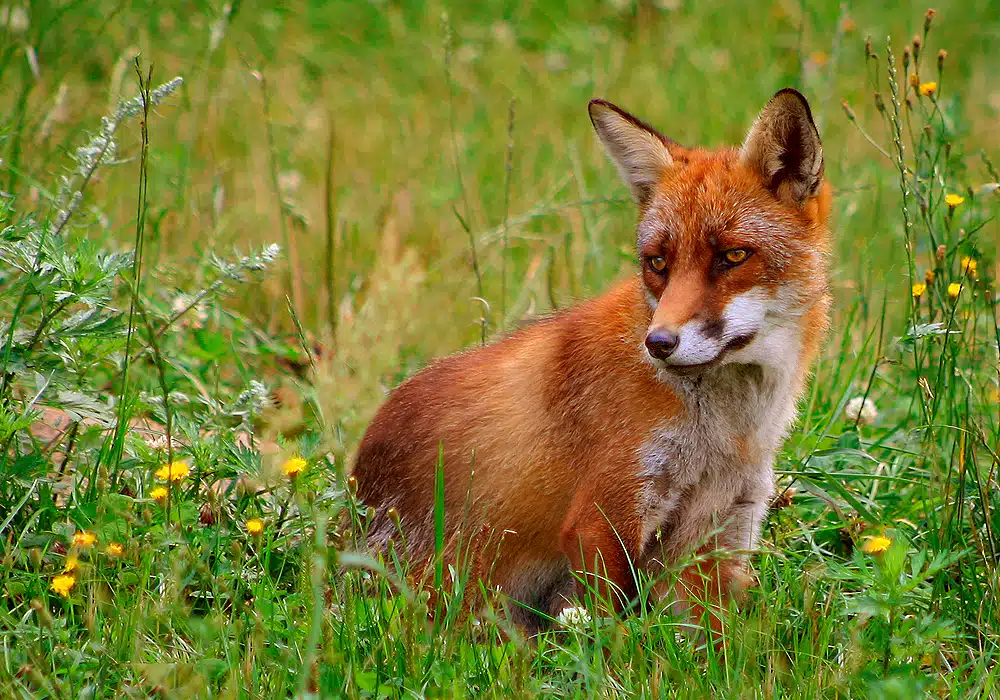
Red Foxes (Vulpes vulpes) are some of the most widespread carnivores in the temperate rainforest.
These types of common animals are known predators of rodents and other animals. They often compete and even kill other animals that might stand in their way for small animals.
Some of the animals Red Foxes can confront and kill include gray foxes as well as dog raccoons.
Present in temperate rainforests around the world, Red Foxes are also some of the most hunted species of these moist forests.
Their fur is the most sought-after fur of all fur animals in the temperate rainforest.
These foxes are also among the few animals to venture out into the municipalities and green-rich urban and suburban areas next to these forests for food such as chicken, lamb, pigeons, and other small animals.
6. Bullfrog
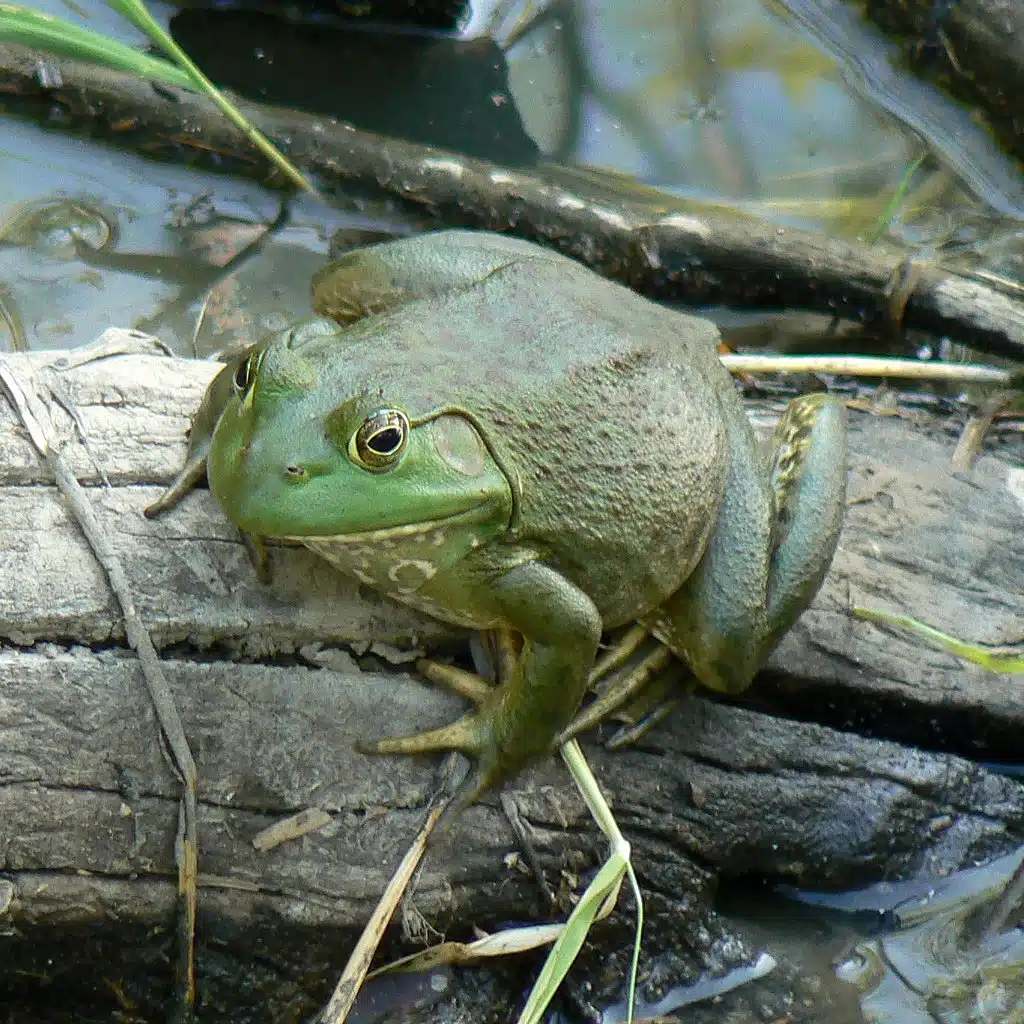
A species of North America, South America, and Western Europe, Bullfrogs (Lithobates catesbeianus) are mostly found close to water.
Large bodies of water are its preferred habitat, as one of the largest frogs in the world.
Its habitat is extensive and it spreads across swamps of North America, overlapping some of the temperate forests in Eastern North America.
Males of the species assemble in loud choruses. These are displayed for females during the breeding season.
High levels of male-to-male aggression are specific to these frogs. Aggression is mostly manifested through specific vocalizations and posture which may also signal the hierarchy of certain males.
As large frogs, Bullfrogs can eat small lizards and even rodents specific to temperate rainforests.
7. Banana Slugs

A species of Pacific temperate forests and beyond, Banana Slugs (genus Ariolimax) are named after their banana-like yellow appearance.
It is estimated hundreds of species of slugs live in these forests but Banana Slugs are a common sight as they’re seen close to large urban areas.
These types of slugs are also common because they live on the forest floor.
Banana slugs have potent slime which can make some predators move away with a numb tongue.
Still, they play an important role in the feeding ecosystem of various species. Raccoons and snakes in temperate rainforests are among the species that feed on Banana Slugs.
8. Roosevelt Elk

Roosevelt Elks (Cervus canadensis roosevelti) are a rare sight but a confirmed present in The Pacific Northwest temperate rainforest.
As some of the largest animals in this temperate rainforest, Roosevelt Elks mostly survive on plants.
They can eat fresh shoots and young types of cedar or even fir.
Most of their diet is based on whatever is in season. Grasses are their main food for the summer.
Mushrooms are among their common foods in the fall while wintertime is a good time for elderberry and similar fruit.
With sufficient food, Roosevelt Elk can grow to a size of up to 10 feet.
9. Black Slug
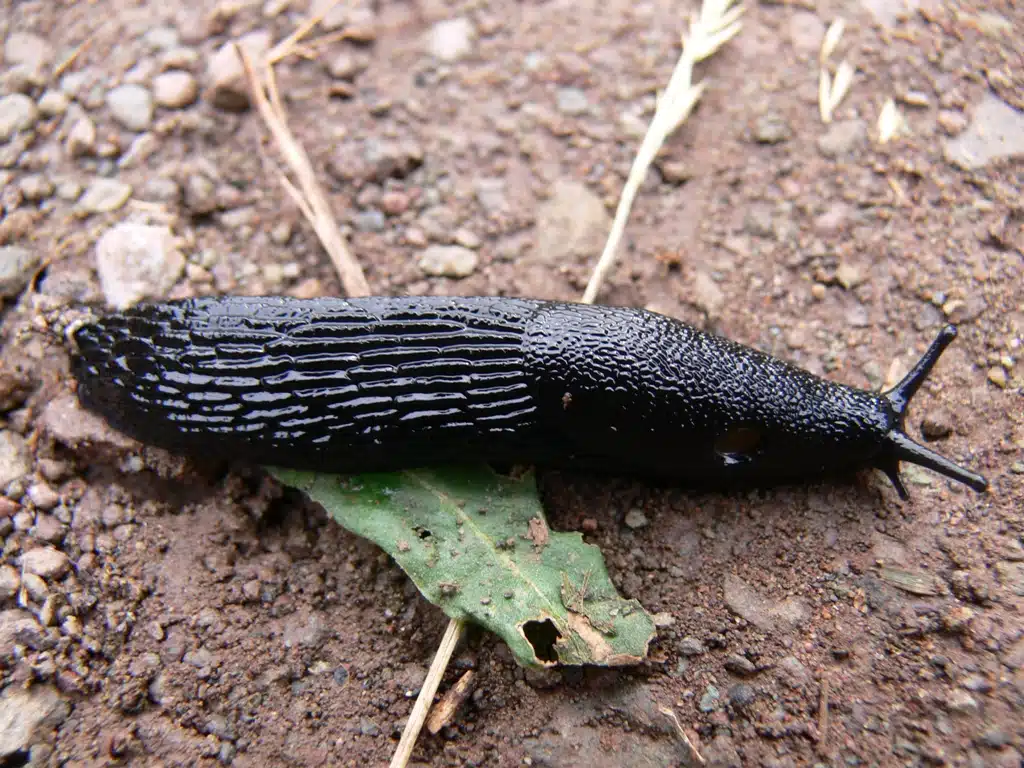
Black Slugs (Arion ater) are a specific type of slug with a presence in British and Irish temperate rainforests.
This is one of the omnivorous species of these forests.
It eats both during the day and during the night, both animals and plants. It feeds on carrion and animal feces as well as on the rainforest-rich lichen.
As slugs, they use mucus to move along the ground of the forest.
Humans used to eat these types of slugs by picking them up directly from the forest floor.
However, their taste isn’t good. Since they eat carrion, these slugs may also carry pathogens which doesn’t recommend them for human use.
A typical slug grows to a length of up to 6 inches and may only cover up to a few feet per day.
10. American Shrew Mole

This species (Neurotrichus gibbsii) is found in The Pacific temperate forest, in the most humid areas of the forest.
It needs loose soil to move around and it can be found in areas close to water.
This type of digging creature creates tunnels in the ground. It also finds its food in the ground.
From insects to snails, American Shrew Moles use an elaborate system of tunnels for food.
It usually takes a lot of time to dig a tunnel and American Shrew Moles may be found in the same tunnels as other moles.
While they live in the ground, these types of shallow-digging moles also have plenty of predators.
Some predators such as birds catch them at the surface while others such as raccoons and foxes have adapted to digging their way through their ventilation shafts to capture these moles.
These types of moles typically live together in a small area. A group of up to 15 moles can share the entire or part of a tunnel system in the same area.
11. Grizzly Bear

Grizzly Bears (Ursus arctos horribilis) are a common sight in high-elevation temperate rainforests.
The diet of these omnivores is diverse. As some of the largest animals of temperate rainforests, Grizzly Bears eat fish, elk, and even carrion.
A common sight in Western North America, Grizzly Bears with sufficient food may live up to 20 years.
The numbers of these bears are high across North America, where it’s believed more than 60,000 Grizzly Bears live.
Among the species of the temperate rainforest, Grizzly Bears are also a known hibernating species.
They can hibernate for almost half a year.
Mostly living on their own, grizzly bears next to the ocean and next to rivers tend to be spotted in groups, mainly in areas with plenty of fish.
12. American Black Bear

American Black Bears (Ursus americanus), one of the staple animals of North America’s forests also live in temperate rainforests.
Among its subspecies, The California Black Bear is the one to be present in these forests.
It lives in the forests of the state through to Oregon.
These types of bears tend to live in the densest areas of the forest. This is where they find plenty of fruit-making shrubs to feed on.
They can reach these areas themselves, even if this involves crossing streams and swimming through rivers.
With a better sense of smell than dogs, they can locate the fruits and edible food in their area faster.
13. Groundhog
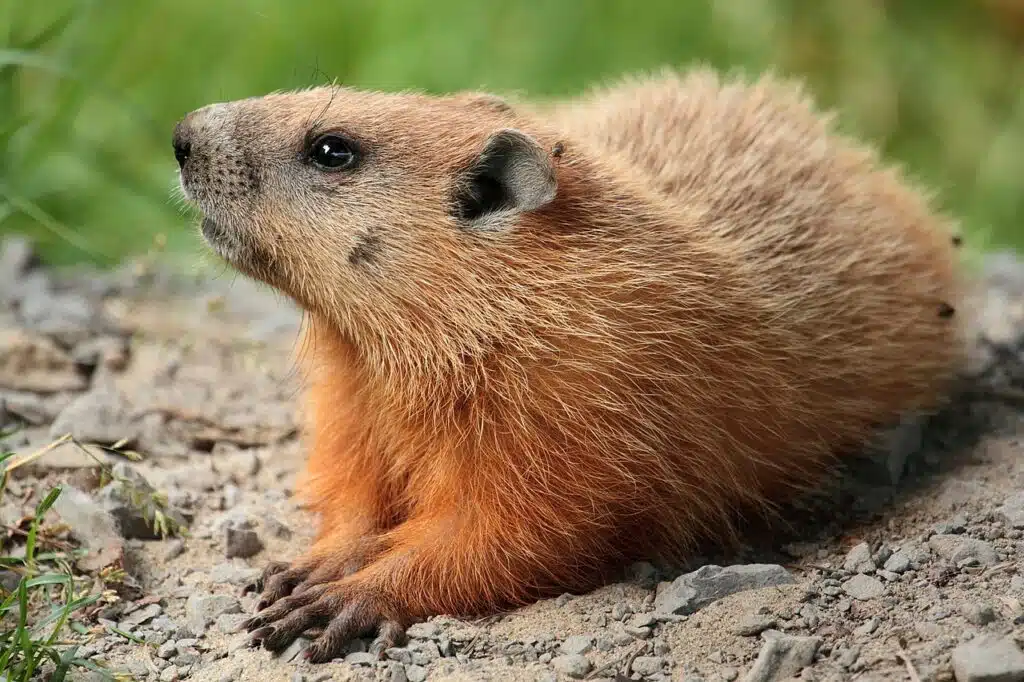
Groundhogs (Marmota monax) are types of marmots that live in forests. They can live in different forests and adapt to temperate rainforests by entering hibernation.
Unlike bears that hibernate for 5 months, groundhogs hibernate for up to 3 months, but only during the coolest years.
Digging its burrows is another method these ground squirrels use to protect themselves from cool nighttime temperatures.
Grondhogs are also found close to crops and farms. They show destructive feeding habits going after almost any type of cultivated vegetable.
A typical groundhog can live up to 6 years with sufficient food.
14. White-tailed deer

White-tailed deer (Odocoileus virginianus) are present around the temperate rainforests of the Eastern US as well as throughout The US and Canada.
They even live in Central and Northern parts of South America.
One of the differences between warmer region White-Tailed Deer and temperate region White-Tailed Deer is size. The ones in warmer climates are slightly smaller.
Other differences include the appearance differences across its numerous subspecies. While most are brown, red-brown, or spotted, there are even White-Tailed Deer that are all-white.
Grasses are a considerable part of their diet with cacti being eaten by deer of the species living in the desert, together with other plants and shoots.
15. Monito Del Monte

A mountainous species, Monito Del Monte (Dromiciops gliroides) is a common marsupial living in the temperate forests of South Ameerica.
Found in The Valdivian temperate forests of Chile and Argentina, this is an arboreal species.
Feeding on insects on trees and the ground, these small rodent-like marsupials also build their nests on the old trees of the temperate rainforest.
The nests can be situated on branches or in tree cavities. Many are found in areas away from sight,
When located in visible areas of the tree, The Monito Del Monte lines the nests with moss to camouflage them.
16. Southern Pudu

Sharing the same South American temperate rainforests with Monito del Monte, Southern Pudus (Pudu puda) is a type of deer.
Considerably smaller than most species of deer, Southern Pudus only grows to a maximum height of 18 inches.
A chestnut color is specific to this species which also shows yellow-brown legs and brighter areas on its crown.
Preferring evergreen forests for their food, this type of small deer has also made its way to local plantations next to its forests.
Its feeding habits often limit the regeneration of evergreen locations in the forest.
17. Kodkod

Growing to a length of up to 20 inches, Kodkods (Leopardus guigna) are types of wild spotted felines.
Their presence in Chile and Argentina is tied to the temperate rainforests of South America.
With a similar appearance to wild cats, domestic cats, or leopards, these types of felines are strong hunters.
They survive the temperate rainforests (mostly in Chile) by hunting during the day and at night.
Some of their favorite prey include rabbits and small birds. In rare cases of hunger, Kodkods may also resort to carrion.
18. Slender-Billed Parakeet
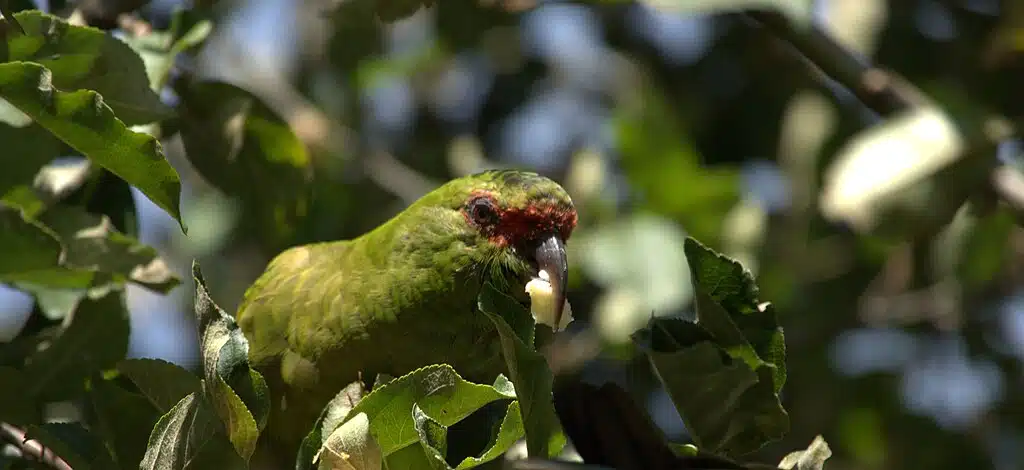
Mostly green with red stripes across its eyes and face, Slender-Billed Parakeets (Enicognathus leptorhynchus) are a species of South America.
They mostly live in Chile’s temperate rainforests and grow to a large size of up to 16 inches.
This type of bird feeds on various grasses, seeds, and fruit.
Its food depends on their seasonality but this bird is known to sometimes make nests.
It can live in tree cavities or between rocks. It can line nests with twigs or grasses and it lays a large number of eggs after breeding.
Chilean locals refer to this bird simply as The Choroy.
19. Chilean Pigeon

Also, a species of The Chilean temperate rainforest, Chilean Pigeons (Patagioenas araucana) have a similar size to Slender-Billed Parakeets.
These types of pigeons have a more robust body, on the other hand.
Growing to a length of about 15 inches, Chilean Pigeons live in the state’s temperate forests, also crossing into Argentina.
These birds are also differently-colored than most other urban pigeons of the world.
The male has a red-purple nuance while female Chilean Pigeons are brown or brown-red.
Pigeons of the species live both in the rainforests itself, in clearings, or next to the rainforest.
Seeds and fruit are the primary types of food here.
In periods of low food availability, the species can also move North to a dryer type of forest.
20. Chucao Tapaculo

Chucao Tapculo (Scelorchilus rubecula) is also a species of Chilean and Argentinian temperate rainforests.
This type of singing bird prefers to live deep in the rainforests where it eats seeds and invertebrates.
Its appearance is multicolored, with specific red sections on the upper and lower chest.
Yellow areas are seen on its upper back while brown-red nuances cover its face and wings.
Blue plumage is characteristic of its underside as well as the sides of its head.
Chucao Tapaculps also have a matching shiny blue beak.
A type of loud bird that sings, this is also a species with a preference towards the moist areas of the rainforest, mostly living along streams or rivers.
21. Cougar

Cougars (Puma concolor) are types of cats that live in all types of forests across The Americas.
Ferocious predators live highly solitary lives which means spotting them may not be easy, even in areas where they are numerous.
Cougars are also one of the few species of the temperate rainforest without a real predator. While they can be chased by bears or wolves, they aren’t killed.
Cougars hunt and eat alone, except for larger prey which they take on together and eat together.
These types of cats are known for their different vocalizations. From aggressive sounds such as hisses, cougars also have different breeding calls, just like cats.
Some of the most common threats to cougars include people hunting them and farmers who kill cougars, often setting up traps to protect animals on the farm.
22. Magellanic Woodpecker

Growing up to 18 inches, this (Campephilus magellanicus) is the Southernmost woodpecker of South America.
Its range expands through Southern Chile and Southern Argentina, in areas of the temperate rainforest.
As woodpeckers, the species spends a lot of time up on trees deep in the forest.
Males are distinguished by females having fully red heads while less colorful females have a black head and a red section only around the beak.
Both males and females are primarily black. Secondary coloring, apart from the vivid red nuance of the head, includes white sections on the back and wings.
Unlike many other birds and even species of the temperate rainforest, Megallanic Woodpeckers are mostly spotted in pairs or even groups.
Family groups are common as males and females provide for the offspring.
These woodpeckers may also live in harmony with other birds that don’t have similar dietary preferences.
23. Brown Bear

Brown Bears (Ursus arctos) are some of the largest bears in the world and a species found in all temperate forests in the Northern parts of The Northern Hemisphere.
These large bears are only seen on their own, as individual creatures, or together at the beginning of the summer, which marks their breeding period.
Living in high numbers in Europe and Asia, these types of bears are some of the most omnivorous species of the temperate rainforest.
Fruits, flowers, and grasses are their main dietary choice, followed by all types of animals and fish.
Bears that live near the coast eat more fish and crabs, adapting their diet to the species found around them.
These bears don’t have many predators and tigers might be their sole real threat in parts of Asia.
Brown bears can even chase packs of wolves away, especially when they want to eat their prey.
24. Roe Deer

Mostly gray-brown, Roe Deer (Capreolus capreolus) are among the species of deer with a common European presence.
They are found in the temperate rainforests of Britain and Ireland, with a significant presence in the dry forests of other areas as well.
Roe Deer are also present on cultivated land and around farms.
Most of its natural habitats are comprised of high-elevation forests, but these deer have also been introduced to various European countries.
Grasses and fruit are among their favorite foods.
These types of deer are also hunted down as game animals frequently.
Unlike other animals of the temperate rainforest, Roe Deer leaves significant traces behind them, making tracing easier.
For example, these deer chase each other in circles during the courtship process, flattening out vegetation and forming circles in the forest.
Other traces of these deer include snow traces as they don’t hibernate and continue moving around for food in the winter.
25. Golden Jackal

Golden Jackals (Canis aureus) are found in the forests of Europe, Arabia, and Sothern Asia.
They inhabit vast areas close to rivers and even the sea.
As one of the oldest canines in Europe, Golden Jackals are mostly seen as wild canines that will eat anything.
Surviving both on what they catch and carrion, these canines eat rodents, small birds, and even bugs.
Sometimes misidentified as wolves, Golden Jackals live both in dense forests and in forest clearings. They may prefer areas with vegetation to hide in as ambush predators.
Most types of Golden Jackals are seen in pairs, during and after the breeding period. Males and females remain together for a short time after breeding.
26. Koala Bear

A species of the Australian rainforest, Koala Bears (Phascolarctos cinereus) are among the smallest bears in the world.
These small gray bears are a common sight in Australia’s regions with eucalyptus. Over 30 species of eucalyptus provide their preferred leaves, dominating their diet.
Males and females tend to live in the same area, although not particularly close to each other.
Koala Bears are mostly solitary species, just like most other bears.
They may spend just a short period with other bears or no time at all with other koalas during the day.
Koala Bears can live long lives of almost 20 years in their eucalyptus forests.
However, many die sooner, particularly when falling from trees. These arboreal bears know how to grab onto branches.
Male-to-male confrontation can lead to one male falling and dying while young Koalas may also fall and die before learning how to safely navigate trees.
27. Velvet Worms
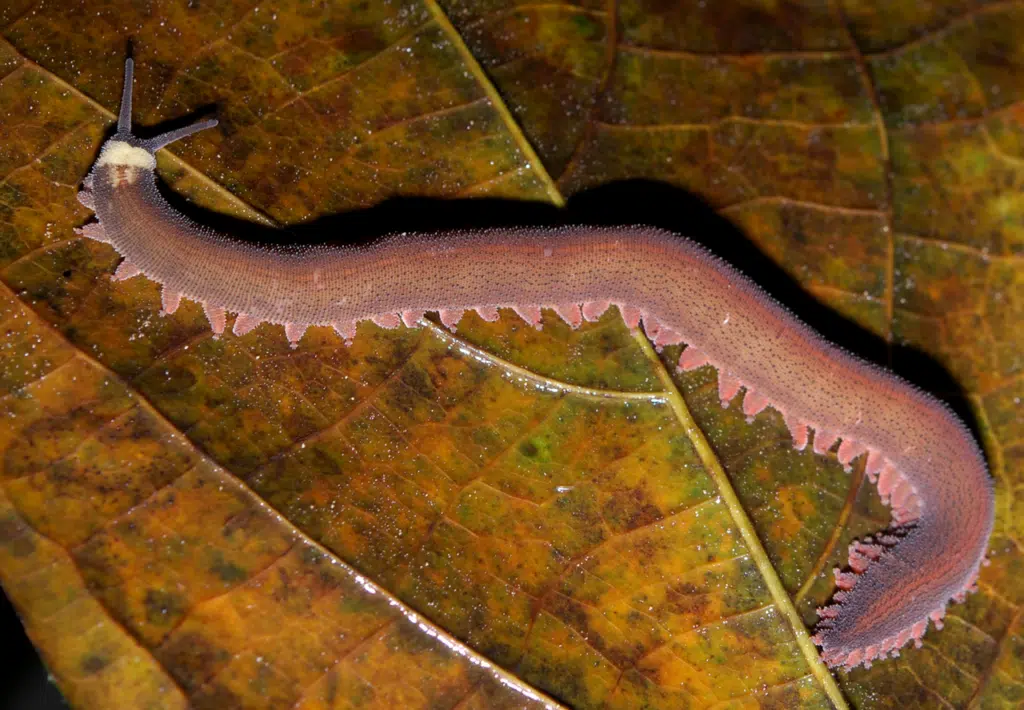
Velvet Worms are present in temperate rainforests as well as in grassland outside forests.
They live under leaf litter or logs, in areas with plenty of food and humidity. On occasion, they may also make their way under tree bark.
Their hunting skills are sharp and this type of nocturnal worm can often eat some of the largest bugs of the forest, including roaches.
Woodlice are among the most common types of bugs they eat in the forest.
Velvet Worms are also known for living in groups. A series of up to 15 individuals can live in the same area.
These individuals may also feed together.
Velvet Worms of a group are typically related, due to their proximity.
The hunting success of these worms is mostly tied to their capacity to eject slime. This sticky substance immediately captures different invertebrates.
28. Gang-Gang Cockatoo

A species native to Australia, Gang-Gang Cockatoo (Callocephalon fimbriatum) are mostly gray parrots.
Males are a bit more colorful their females with their red heads and crests.
These types of parrots also live in forests where they spend time up on trees. They also build nests in tree cavities, a responsibility of the all-gray female Gang-Gang Cockatoo.
Both males and females take turns with incubation duties.
These cockatoos are also loud, their vocalizations being similar to those of squeaky doors.
Reaching a wingspan of up to 30 inches, these birds live in small or large groups.
They prefer resting in small groups, of up to a few individuals, and foraging in large groups. Also, a species tied to eucalyptus trees, these birds move closer to coastal areas in the winter.
29. Crimson Rosella

This colorful species (Platycercus elegans) is named after its dominant crimson nuance. The vivid red color of the species covers its head and underside, with black and blue plumage characterizing its wings and tail.
Native to coastal Australian forests, Crimson Rosellas are seen in pairs or groups.
Juveniles are more likely to be spotted together in groups.
Crimson Rosellas are also birds that have a vast diet comprised of fruit, seeds, and nectar.
On occasion, they may also eat ants and insects right off the ground.
These types of birds may grow to 15 inches but still have a few common and larger predators. Falcons and owls feed on these birds.
30. Broad-Headed Snake
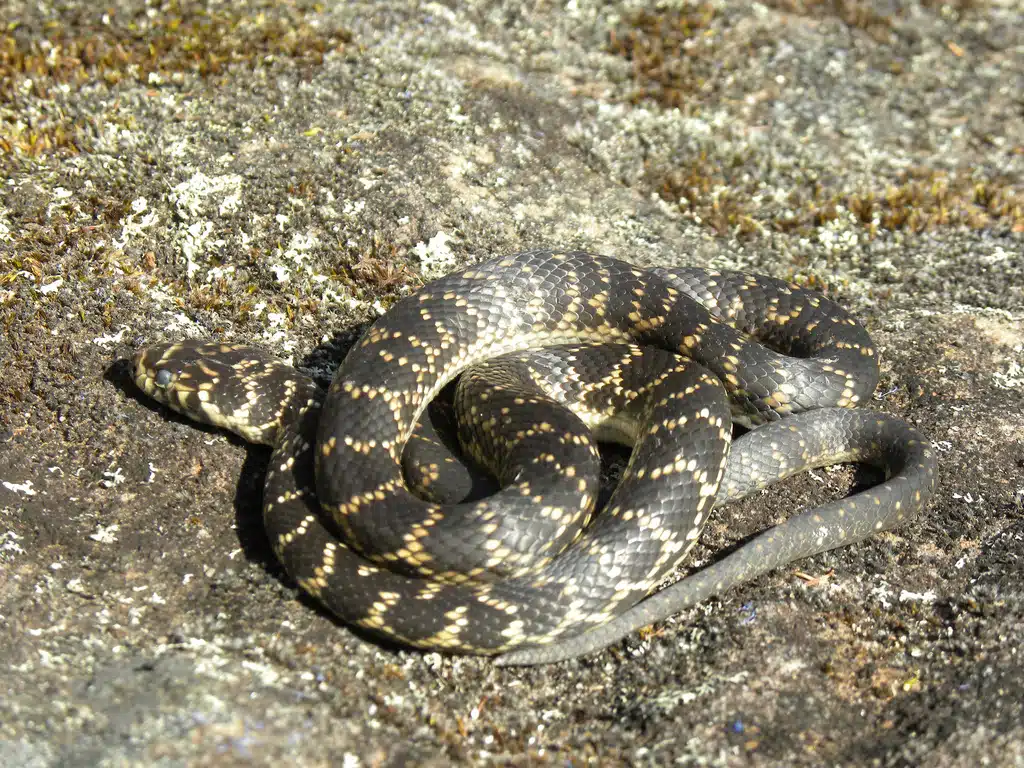
Native to the forests in Eastern Australia, Broad-Headed Snakes (Hoplocephalus bungaroides) are one of the venomous snakes of the country.
Lizards such as sinks represent the bulk of their diet. However, Broad-Headed Snakes can go months without food, unlike most other species of the temperate rainforest.
These snakes are identified by their black ground color with yellow bands, stripes, or irregular patterns across the dorsum.
Mostly nocturnal, this snake nests in tree cavities during the day.
Its bite is painful and dangerous, but not life-threatening to humans.